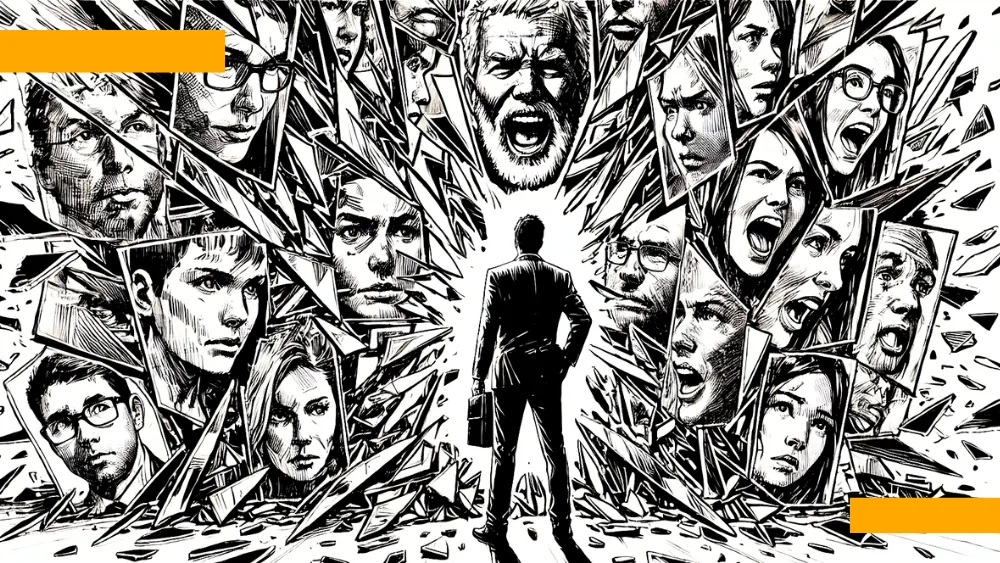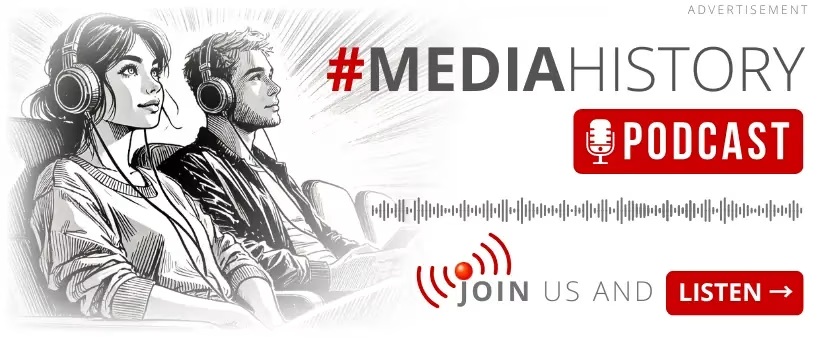 illustration: DALL-E
illustration: DALL-EAs many as 93% of media organizations affiliated with the European Broadcasting Union (EBU) declare that diversity is a priority for them. More than half (60%) have formal DEI strategies, and half employ dedicated staff responsible for implementing these efforts.
These are no longer just declarations. According to the report "PSM Diversity Strategies 2025," produced by Dorien Verckist and Emma Ryborg from the EBU, public media are taking concrete steps to ensure balance within their structures and in the content they produce.
It is worth noting that 66% of organizations implement actions covering at least three different diversity dimensions, such as gender, age, or disability. In 2023, as many as 79% of organizations actively promoted gender balance, while 72% took initiatives to support people with disabilities.
Diversity in Content and Teams
Public broadcasters use an average of ten different tools to support diversity within their staff structures. The most popular include:
- DEI training for employees.
- Mentoring and career development programs for underrepresented groups.
- Revisions of recruitment and promotion procedures to ensure equal access to positions.
- Quantitative and qualitative goals related to employment across various social groups.
- Creating content codes and guidelines for inclusive language.
- Facilities for people with disabilities, including workplace adjustments.
Most organizations focus on ensuring gender balance (79%) and inclusion of people with disabilities (72%). Unfortunately, in some aspects of diversity - such as sexual orientation or religion - actions are significantly less advanced.
| Action Area | Share of Organizations (2023) |
|---|---|
| Gender balance | 79% |
| Inclusion of people with disabilities | 72% |
| Age diversity | 58% |
| Racial and ethnic diversity | 51% |
| Socio-economic status | 49% |
| LGBTQI+ and sexual orientation | 39% |
| Religious diversity | 36% |
It is clear that while gender equality and support for people with disabilities are priorities, other dimensions of diversity are still neglected.
Monitoring and Reporting. Do the Data Tell the Truth?
One of the main challenges faced by public media is monitoring the effects of implemented strategies. As many as 73% of organizations collect diversity data within their teams, while 54% also analyze content diversity.
The tools used in this area are diverse - from surveys and reports to content monitoring and even the use of artificial intelligence for data analysis. However, the lack of consistent methodologies and difficulties in collecting data on minority groups, such as LGBTQI+ individuals or ethnic minorities, remain problematic.
Biggest Challenges in Diversity Management
Despite implemented strategies, many organizations encounter difficulties in their execution. The most frequently cited issues are:
- Lack of unified standards - different countries use different approaches to diversity data monitoring.
- Legal issues - in some countries, regulations prevent the collection of data on sexual orientation or gender identity.
- Implementation challenges - despite good intentions, structural changes often face internal resistance.
- Low representation in senior positions - although the number of women on boards is increasing, they still remain a minority at the highest levels.
- Content monitoring difficulties - it is challenging to analyze whether productions truly reflect social diversity.
Do you trust AI-created news? You might have NO CHOICE 👇
What Has Been Achieved?
Despite difficulties, the efforts are yielding results. Public media are becoming leaders in gender balance - women now make up 45% of employees and 46% of management staff. In 2023, half of the promotions went to women, indicating that DEI strategies are bearing fruit.
Moreover, more and more organizations are focusing on transparency - 72% of them publish diversity data about their teams. This not only builds trust but also motivates further action.
The Future of Diversity in Media
The report PSM Diversity Strategies 2025 shows that diversity is becoming an integral part of public media operations. The coming years will bring further strengthening of gender equality efforts and the integration of people with disabilities, but intensifying efforts in less developed areas, such as racial diversity or sexual orientation, is also necessary.
Through an integrated approach to DEI, public media can not only improve their image but also increase audience trust. This is an opportunity to build more open and diverse editorial teams that better reflect the complexity of modern society.
The full report "PSM Diversity Strategies 2025" is available at European Broadcasting Union
COMMERCIAL BREAK
New articles in section Media industry
Advertising market 2025. Poland, Europe and the World
Marcin Grządka
The global advertising market is growing by 8.8% in 2025 and will reach a value of 1.14 trillion dollars. The industry result in Europe records slightly lower dynamics, at the level of 5.8%. In this comparison, Poland performs clearly above the average. We will record an increase of 8.9% this year and a value of 18.56 billion PLN - estimates WPP Media in the annual report "This Year Next Year".
The print media market 2025. Three global trends
Krzysztof Fiedorek
The market value is 359.53 billion dollars, yet the erosion is visible to the naked eye. The decline for newspapers will amount to -2.3 percent. Despite this, print retains strength: it generates 76 percent of subscription revenues and enjoys 82 percent consumer trust. The future of the industry is defined by hybrid strategies and niche specialization.
Journalism in the age of AI. Why people prefer humans over machines
Krzysztof Fiedorek
Only 12% of people accept news created solely by AI, while 62% prefer those written by humans. At the same time, only 19% notice labels indicating the use of artificial intelligence, while younger audiences ask AI to explain the content to them. These are the findings of the Reuters Institute report on artificial intelligence in media.
See articles on a similar topic:
Most medical influencer posts on TikTok are FALSE
KFi
Researchers from East Carolina University Health Medical Center analysed 120 TikTok videos tagged with hashtags such as #naturalparenting, #antivaccine, and #holistichealth. The results of their study leave no doubt.
Numbers Stations in Radio. For Puzzle and Cryptography Enthusiasts
Krzysztof Fiedorek
They broadcast seemingly meaningless strings of numbers and letters, sometimes short, encrypted messages. Some even play music between coded transmissions or broadcast propaganda. For over a hundred years, number stations have puzzled radio enthusiasts and mystery hunters. What do we know about them?
Journalism and Technology. How Indian Newspapers Fight to Survive
KFi
The COVID-19 pandemic accelerated the transformation of India's press industry. Traditional print media, forced to fight for survival, adopted modern technologies ranging from data analysis to artificial intelligence. How do journalists adapt to new roles, and how do media redefine their future in the digital age? Researchers from the Symbiosis Institute of Media & Communication have explored these questions.
Automation of Disinformation. Global Risks Report 2025 and Media
Krzysztof Fiedorek
Disinformation and information manipulation have ranked first among global threats in both the two-year and ten-year perspectives. A particularly concerning factor is that social media algorithms often favor controversial or shocking content, further fueling disinformation.





























